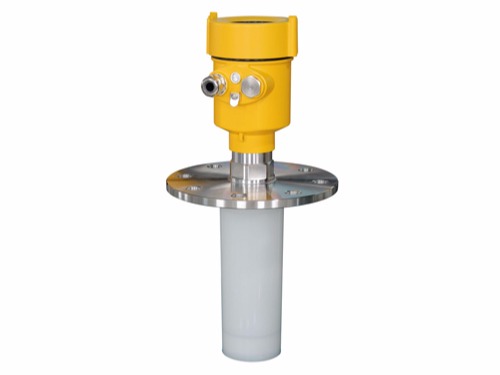Cottage cheese is a food ingredient commonly used in food processing such as bakery, dairy, and pastry. In order to accurately monitor the level of cottage cheese mixing vessels, radar level meters are widely used. In this paper, we will introduce the characteristics of cottage cheese mixing vessels and provide two actual measurement cases to demonstrate the application of radar level meters in this area.

Cottage cheese mixing containers are characterized by the following features, Large capacity: cottage cheese mixing containers usually have a large capacity to accommodate large batches of cottage cheese ingredients.
This large capacity makes the cottage cheese production process more efficient and continuous. Non-uniformity: Cottage cheese tends to exhibit non-uniformity during the mixing process.
Due to the viscous and fluid nature of cottage cheese, the level in the container can fluctuate and become uneven. Corrosivity: Cottage cheese contains a certain amount of acid, and the container material needs to be corrosion-resistant to ensure long-term stability.
Temperature variations: During the production of cottage cheese, the temperature inside the container may change. Therefore, the level-measuring equipment needs to be able to adapt to different temperature conditions for accurate measurement.

Below are two examples of actual measurements that demonstrate the use of radar level meters for level measurement in cottage cheese mixing vessels.
Case 1: During the cottage cheese mixing process in the bakery industry, the level of cottage cheese in the mixing vessel needs to be monitored.
Changes in the level of cottage cheese are directly related to the quality of the product and the production results. Conventional level measurement methods such as float gauges are limited by the viscosity and fluidity of the cottage cheese, and their accuracy and stability do not meet the requirements.
Radar level meters, on the other hand, provide highly accurate and stable level measurements and can accurately monitor the level changes of cottage cheese in the mixing vessel.
By connecting the radar level meter to the control system, operators can monitor level changes in the cottage cheese mixing vessel in real-time and adjust the mixing process as needed to maintain product consistency.
This real-time monitoring and automated control help improve productivity and reduces the risk of retrying and human intervention if something goes wrong.
Case 2: In the dairy industry, level monitoring of the cottage cheese mixing vessel is critical during the cottage cheese production process. Accurate level control ensures uniformity and consistency in the mixing process, resulting in a high-quality cottage cheese product.
Radar level meters provide accurate and consistent level measurement and can play an important role in cottage cheese mixing vessels. By connecting to a data acquisition system, operators can monitor level changes in real-time and adjust mixing parameters to maintain optimal mixing results.
This real-time monitoring and automated control not only improves production efficiency but also reduces the risk of waste and non-conforming products.

In summary, radar level meters have a wide range of applications in the level measurement of cottage cheese mixing vessels. The characteristics of cottage cheese mixing vessels include large capacity, inhomogeneity, corrosiveness, and temperature change.
By using radar level meters, high precision, stable, and reliable level measurement can be realized to meet the demand for level monitoring in the cottage cheese production process.
Two examples of actual measurements demonstrate the use of radar level meters in the bakery and dairy industries.
They help operators to monitor level changes in the cottage cheese mixing vessel in real-time and make adjustments through the automated control system to improve production efficiency and product quality consistency.
